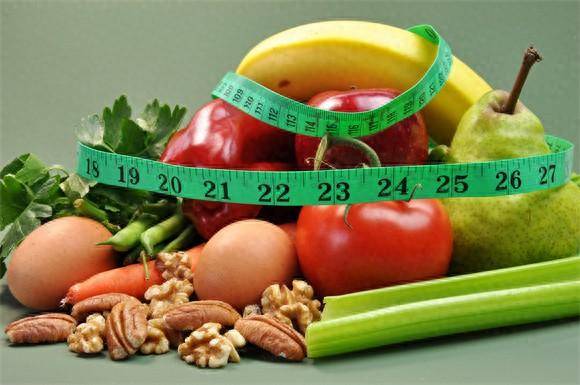Friends who are trying to lose weight all hope to be able to enjoy delicious food to the fullest while also having a wonderful body.
If a certain food contains more energy than the energy it consumes in digestion, absorption, and metabolism, then no matter how much you eat, you won’t gain weight. Are there foods that make you get slimmer the more you eat?
In theory, there might be, what is it? In fact, it’s what everyone calls “negative calorie foods” or “negative calorie foods.” In this article, we will discuss the related issues.
What is the Thermic Effect of Food?
When it comes to “negative calorie foods,” we must first talk about the thermic effect of food.
The thermic effect of food refers to the increase in energy expenditure caused by eating, that is, the energy required to digest, absorb, and metabolize a certain food, which is a part of the body’s daily energy expenditure.
So how does it take energy to digest, absorb, and metabolize food? For example, chewing of teeth, contraction and relaxation of the stomach, peristalsis of the intestines, secretion of various digestive juices and enzymes all require energy.
How significant is the Thermic Effect of Food?
The thermic effect of food roughly accounts for 0% to 30% of the energy of that food, with carbohydrates, fats, and proteins having thermic effects of 5% to 6%, 4% to 5%, and 30% to 40% of their energy, respectively, while the thermic effect of a mixed diet accounts for about 10% of its energy.
Take carbohydrates as an example, to make it clearer.
1 gram of carbohydrates contains 4 kilocalories of energy, so if you eat 100 grams of carbohydrates, the energy contained is 400 kilocalories, and the thermic effect of these 100 grams of carbohydrates is: 400 kilocalories x 5% to 6%, which is 20 to 24 kilocalories.
Therefore, whether you are eating pure carbohydrates, pure fats, pure proteins, or a mixed diet, the thermic effect of food only accounts for a small part of the energy of that food, at most up to 30%, which cannot exceed the energy contained in that food.
So, the foods like celery, spinach, apples, kiwis, oats, etc., that are rumored to make you slimmer the more you eat, are not negative calorie foods at all!
What exactly is a Negative Calorie Food?
In theory, ice water is considered a negative calorie food.
Chinese Dietary Guidelines recommend that adult men and women drink 1700 milliliters and 1500 milliliters of water per day, respectively. If you drink this amount and it is cold ice water, the body needs to expend about 55.5 to 62.9 kilocalories to warm it to body temperature, making water a negative calorie food that helps you get slimmer the more you drink.
However, the energy of 6 to 7 cashews (about 10 grams) is 55.9 kilocalories, which is almost equivalent to the energy consumed by drinking 1500 milliliters of ice water per day. A box of non-fried potato chips has an energy content of over 500 kilocalories. So, rather than drinking water to increase energy expenditure, it’s better to control the intake of high-energy foods.
Some friends may say, why not just drink more water? They don’t mind feeling uncomfortable in the stomach or frequent bathroom visits, and drinking ice water doesn’t cause any discomfort in the gastrointestinal tract.
Let me tell you a little secret, drinking three to five hundred milliliters of water before meals temporarily occupies a certain volume of the stomach, making you eat less, in simple terms, filling up with water reduces calorie intake.
Does Eating More Protein Help in Weight Loss?
The thermic effect of protein is significantly higher than that of carbohydrates and fats. Is it viable to eat more protein and reduce carbohydrates and fats to lose weight?
Indeed, this idea works.
Studies have shown that obese individuals who received a high-protein diet for 6 months had a significant weight loss compared to those on a normal protein diet. Even after a 1-year follow-up, the group on the high-protein diet had a 10% greater reduction in abdominal fat than the control group.
Therefore, the “Chinese Medical Nutrition Therapy Guidelines for Overweight/Obesity (2021)” also recommends using a high-protein diet for weight loss. Daily protein intake exceeding 20% of total energy intake or 1.5g/kg per day, but generally not exceeding 30% of total energy intake or 2.0g/kg per day.
For women aiming to lose weight, a daily energy intake of 1500 kilocalories is advised, below is a sample diet recipe providing about 90 grams of protein and an energy ratio of 24%, which can be a reference for girls wanting to lose weight.
Each day, eat 1 egg, 2 boxes of skim milk (480 milliliters), 8 shrimps, 100 grams of lean meat (about 7 rolls of lean beef rolls), 25 grams of dried beancurd sticks (approximately 6-7 sticks), 2 slices of bread (100 grams), 260 grams of rice, 500 grams of vegetables, 20 grams of fat, with an energy intake of around 1500 kilocalories and a protein intake of about 90 grams.
Summary:
Although theoretically ice water can be considered a negative calorie food, it is more practical to control your diet, eat less high-energy foods, exercise more, and avoid discomfort that some friends experience by drinking ice water.
Therefore, do not fantasize about getting slimmer by eating negative calorie foods. To lose weight, it is better to have a balanced diet and exercise moderately.
(Source: Science Popularization China)


